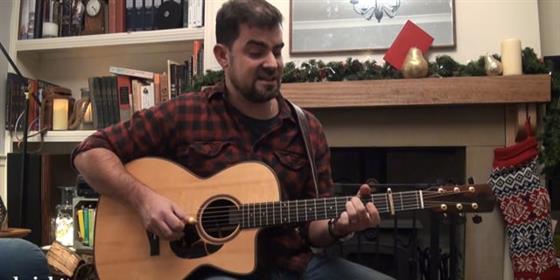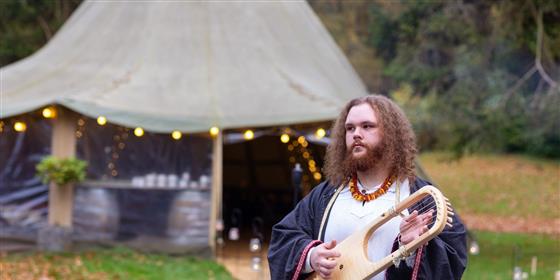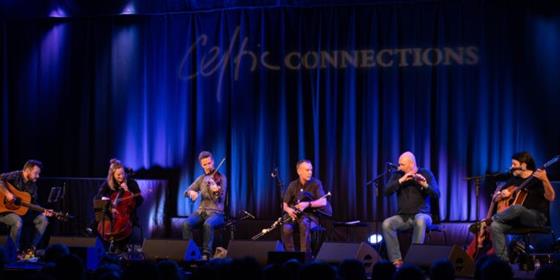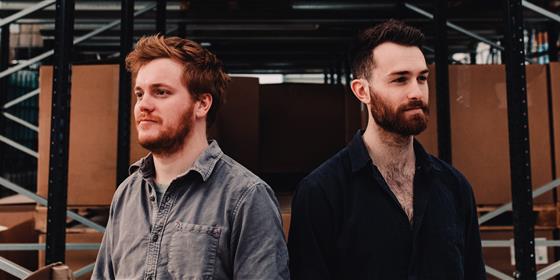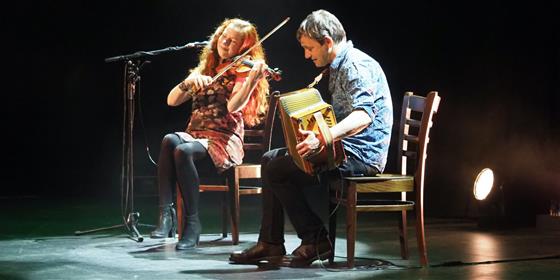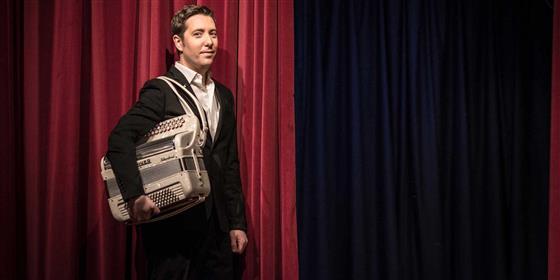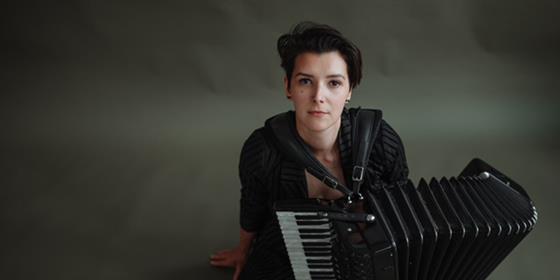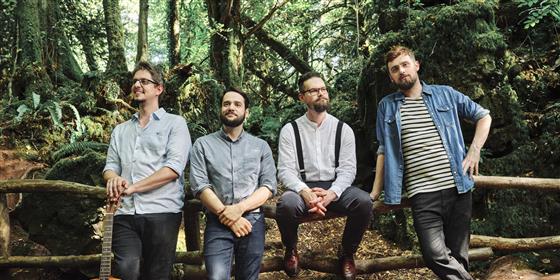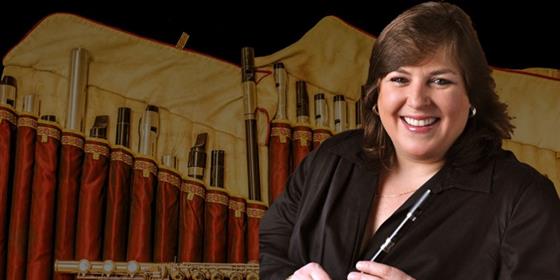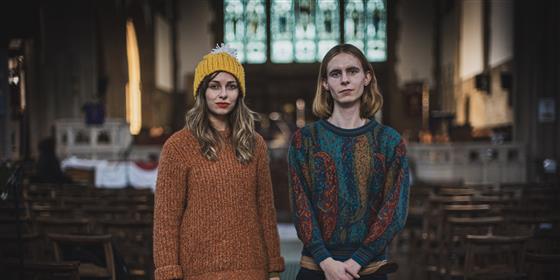Posted by Shelley Rainey 01 August 2013
Gavin Davenport is a very versatile musician, performing solo or as a member of the Crucible Trio, Hekety, Glorystrokes, The Albion Band, Morris On or the Davenport Family. He has recently been appointed Learning Officer for the Full English project at the EFDSS. His second solo album, The Bone Orchard, was released in March and has proved to be one of the best releases of 2013 so far. We ask him all about it.
Your second album, The Bone Orchard, had some very positive reviews. Were you pleased with its reception?
Ha! Yes, of course. Reviews have been very positive, and there’s a real vindication in that. It’s nice to do a ’traditional’ album that connects with so many people. Whilst it is a departure from the stripped-back sound of Brief Lives, it is a trad album at heart and it’s great to know that people like that. It was disappointing to not get any attention from the broadsheets, but the music press and online reviewers have been very kind.
To be compared to your heroes and have a personal piece of work described as ’seminal’ is quite humbling.
There are three original compositions on the album and the rest are traditional. Your own songs draw very much on traditions both in style and subject matter. Wooden Swords and May Queens is beautifully poignant. Can you tell us what inspired you to write it?
That song was inspired by a project in Sheffield - as part of the building of a new primary school to replace an old 1930s building, they invited the class of 1937 back in to school to talk about their reminiscences. A lot of the interviewees talked about May Day traditions. I knew it had been a big deal in the North West, but I wasn’t as aware of how much it had been part of life across the whole north of England. There are some fantastic photos in the local archives. It also tied into the school teaching of longsword dancing which is a bit of a Sheffield institution. (I used to dance with the Grenoside team when I lived in Sheffield). All these reminiscences were kind of linked and jumbled into a picture of a tough but idealised period of childhood and I was really inspired by that. As a result of the project, the new school started to teach longsword to the children again, it was a nice closing of a circle. I made a video to show some of the images, which is up on YouTube.
Can you tell us why you used a brass ensemble on this song?
There’s something quintessentially Northern about that sound, and it is deliberately nostalgic - I grew up with miners’ galas and a sense of community that seems to have been whittled away since the mid 1980s. That brass sound just seemed to fit with a lot of the sense of place and period that I was trying to talk about.
The title track makes intriguing use of source recordings. What make you decide to include them? Is there something about those particular performances or songs that made you use them?
Really for me it’s because I’ve taken so much from those people - whether people know or hear it or not. Those old singers have given me a way to make money, make friends, travel the world, have holidays, nice instruments and lots of the things that have been the very best parts of my life. May Bradley and Phil Tanner whose voices you can hear in there are some of my favourite singers.
Are source recordings important to you? Do you use these a lot when choosing material?
Completely. I am not much of a music reader at all so often things are learned by ear and to have access to those singers’ material is really valuable, particularly as we’re living in a time when there isn’t ready access to people singing traditional songs in every community. I think it could be too easy to venerate them though, to kind of insert them into a pantheon of ’how things should be done’ there were people before them, just like there’ll be people after us. I think that’s important too, otherwise you’re consigning the whole thing to a museum. But stylistically, hearing those old recordings links you to something ’special’. There’s a ’hairs on the back of the neck’ quality to those people’s singing. The other voices you hear are George Hoyland and Louis Wroe who were members of the Grenoside team, recorded by Peter Kennedy. Their reminiscences were special to me as a member of the team, and also a salutary lesson in how things that are ’traditional’ are always, always changing.
On your first album, Brief Lives, you had the odd guest player but on this there’s a consistent band of Tom Kitching (fiddle) Nick Cooke (melodeon) and Tim Yates (double bass) running through it. Why the change?
Well, gigs have got bigger and I wanted to do a few bigger arrangements. After doing the Albion Band album and tour last year I really enjoyed the process of being part of a group of musicians, and a big part of me misses the type of arrangement we did with Crucible - there’s a kind of creativity that you just don’t get when you sit and plan it all out and play it yourself. The guys playing in the band at the moment are all good friends and musicians whose stuff I absolutely love; it was a privilege and a pleasure to get the chance to work with them. Using the same players on the record obviously makes sense and they’ve really input into arrangements, so hopefully if you see a ’band’ show then it should sound like the record!
What have you got planned for the rest of the year to support the album?
I’m imminently going to do festival gigs at Sidmouth, Broadstairs and Bromyard, and then there’ll be a short tour in October with gigs in London and around the country. I’m also doing a few dates with the Albions in the autumn, then I’m doing some solo work with the National Maritime Museum in connection with their Nelson, Navy Nation gallery - there’s some amazing material linked in with that period and it’s nice to focus on that.
Tour Dates in support of The Bone Orchard
4 August 2013 - Sidmouth Folk Week
12 August 2013 - Broadstairs Folk Week
13-15 August 2013 - Bromyard Folk Festival
15 October 2013 - The Green Note, London
17 October 2013 - Chapel Arts Centre, Bath
18 October 2013 - Bury Homegrown Festival (with Lady Maisery & Seth Lakeman)
19 October 2013 - Grayshott Folk Club
20 October 2013 - The Fleece, Evesham
21 October 2013 - Colchester Folk Club
28 November 2013 - National Maritime Museum, London
5 December 2013 - National Maritime Museum, London
